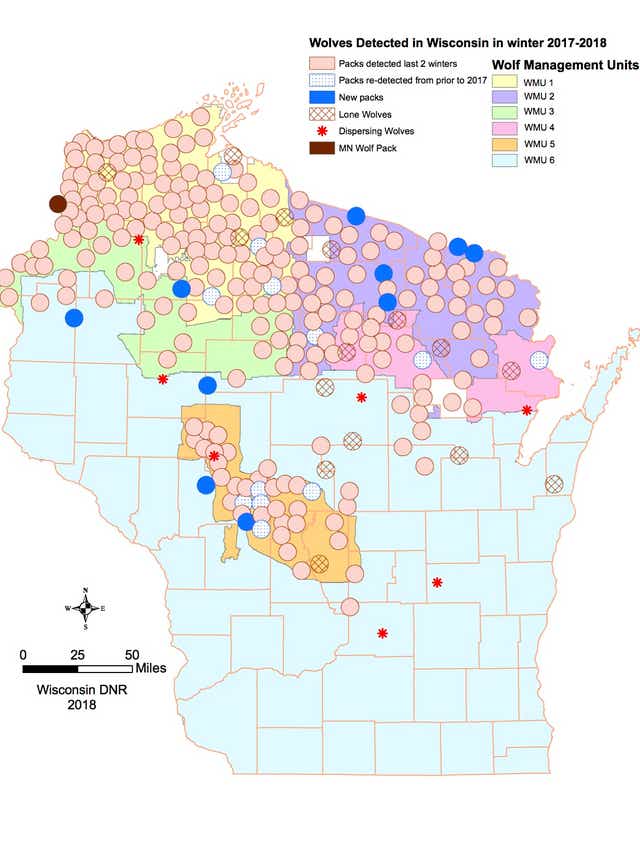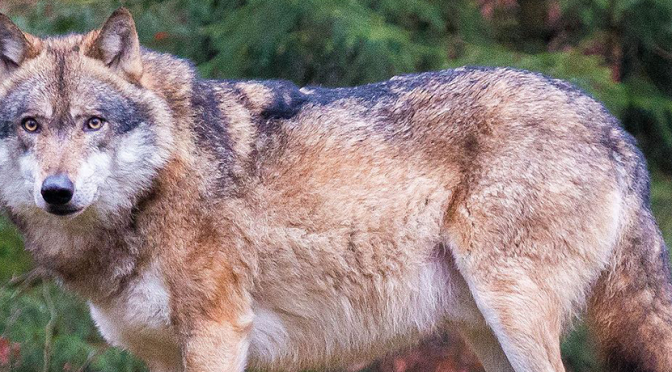If you didn’t know, Wisconsin is currently 1 of about 12 states that have a gray wolf population. To be exact Wisconsin is currently home to about 914 gray wolves; most of them congregating in the northern region of the state. These large numbers recently sparked up a conversation between the public and the government. Specifically, on what to do with the current wolf population found in Wisconsin. This is where the United States Fish and Wildlife Service comes into play. They recently proposed in August of 2019 that the gray wolf populations across the states has stabilized and that they should be taken off the endangered species act list. This would no longer give the federal government the authority to protect them, and instead would allow the states to regulate the grey wolf population themselves.

This newly proposed plan to let states regulate their current wolf populations has sparked a lot different opinions on the matter. Many environmental activists suggest that the population of gray wolves in Wisconsin is only starting to comeback and shouldn’t be considered for delisting. This is because back in the 1830s, before Wisconsin was settled in, they estimated that there where 3,000 to 5,000 gray wolves in Wisconsin at the time. Gray Wolves would eventually become extinct in Wisconsin by the year 1960. This is a common fear that this situation could happen again if the current population of gray wolves becomes unprotected. In addition to that gray wolves play a vital role in an ecosystem by keeping ungulate populations steady allowing for native floral to grow, which in turn benefits many different parts of an ecosystem.

Hunters and Farmers on the other hand welcome the idea of delisting the gray wolf in Wisconsin. Farmers see gray wolves as a nuisance animal, because they occasionally target their livestock as easy prey. Hunters see gray wolves as a nuisance as well, due to the possibility that they might consume the animal before the hunter gets the potential opportunity to harvest the animal instead. Therefore, hunters and farmers would love to be given the opportunity to reduce the current gray wolf population in Wisconsin.
So, should gray wolves stay under federal protection or should they be regulated by the states?


@Hockbein
This is a tricky question to answer. I see both sides of the argument, but I personally don’t like any animal to be hunted or regulated. The Earth is their home too and by industrializing nature we ruined where they already had a home. If it were up to me, I’d say to let them be. There are many more invasive species out there that are really ruining the ecosystem.
I never knew this was an issue our state was juggling with. While I understand the perspective of those who have had their livestock hunted by wolves I believe they still should be protected. A way to provide a compromise to this would be to give farmers compensation for animals hunted by wolves.
The DNR actually has a compensation program that gives money back to farmers that lose livestock to wolf attacks. Since 1985 the DNR has paid out 2.5 million in compensation.
With farmers being financially compensated for the livestock they lose, I think that the gray wolf should be still be protected. For the argument of hunters losing their game, I’ve heard that a primary reason hunters should be allowed to hunt is that it keeps wildlife population under control. If the gray wolves are gone there will be a lot more deer in the wild which feels counterproductive.
really, that’s great
well this must be an issue for people out there, stay safe!
All kinds of chandeliers
Classic chandelier: These types of chandeliers with complex designs and many details are usually made of brass, bronze, or crystal and are made in historical styles such as baroque, rococo, and neoclassical.
Modern chandelier: These chandeliers with simple designs and clean lines are usually made of contemporary materials such as metal, glass and plastic. Their design can be minimalistic and harmonize well with modern and contemporary decorations.
Crystal chandelier: This type of chandeliers are made of shiny and transparent crystals that reflect the light in a beautiful way and make the space very bright. These chandeliers are usually installed in luxurious and magnificent places.
Hanging chandelier: These chandeliers have chains or long wires that hang from the ceiling and are often used in spaces with high ceilings. Their design can be classic or modern.
قیمت لوستر چوبی
Important points in choosing a chandelier
Size and scale: The size of the chandelier should be in harmony with the size of the room and the height of the ceiling. Large chandeliers in small rooms or with low ceilings may look disproportionate.
Decoration style: the chandelier must be in harmony with the interior decoration style to create a harmonious and beautiful effect.
Materials and materials: The materials used in making the chandelier must be durable and of high quality in order to have a beautiful effect and a long life.
Lighting: the amount and type of light provided by the chandelier should be appropriate to the needs of the space. Some chandeliers provide soft light and others provide stronger light.
Chicken Road feels very dynamic because every decision matters. The rising multiplier creates constant pressure, and knowing when to stop is the real challenge. I like the bright cartoon style, which keeps the game lighthearted even when the tension is high. The option to start in demo mode is useful, and local BDT payment support makes it comfortable for players in Bangladesh.